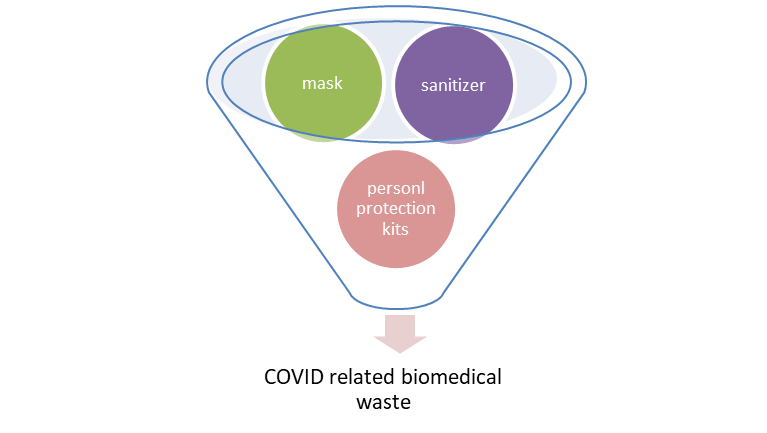We all are well aware of the impact of COVID-19 on the lives of people all round the world. The adversities of the pandemic were not just confined to the health of people, but have also left nations economically distressed. Health and economy are certainly the areas hit hardest by the pandemic, but the side-effects of the Pandemic are far more versatile than we may think. In an attempt to stop the spread of the virus, almost all nations of the world observed lockdowns. The side-effects of COVID-19 are mostly the outcome of such prohibitions.
Our lives have changed drastically due to COVID-19 outbreak and just like our lives; our environment too has been through some significant changes. The pandemic has greatly affected our environment in ways both positive and negative. A few months ago, people across the globe were seen sharing images depicting the positive impact of lockdown (restriction on human activities and movement due to the outbreak of COVID-19 pandemic) on the environment through social media platforms while tagging the images with “Earth is healing” captions. The comparative images of pre and post pandemic environment did spread positivity, but the negative impact of the pandemic on our environment went unnoticed.

An image comparing pre and post lockdown sky in Delhi
Positive impacts of COVID -19 on the environment
Reduced GHG emission
Strict lockdowns were imposed in many countries in an attempt to control the spread of COVID-19 virus. Consequently, most industrial and commercial units were shut down and travelling was prohibited. People were forced to stay at home and there was a sharp decline in the use of private and public means of transportation. This led to a significant reduction in the emission of greenhouse gases and air pollution. Studies reveal that lockdown due to COVID – 19 caused 17% decline in carbon emissions per day, globally.
Reduced energy consumption
Closing down of industrial buildings, offices, large public buildings including institutional, educational and commercial buildings led to a considerable reduction in energy consumption. As per records, Power consumption in India declined by 14.16% in the month of may as compared to that in may 2019, whereas, power consumption in India dipped by nearly 26% within 10 days of imposition of strict lockdown in March.
Reduced consumption of natural resources
Most offices operated through “work from home” method and schools started conducting online classes. As a result, there was a remarkable reduction in the demand and consumption of paper. Many People also stopped ordering newspapers as a precautionary measure.
Water consumption also declined in some areas due to shutting down of industrial and commercial establishments. Hospitality sector requires huge volumes of water, especially for washing and cleaning purpose, and closing down of hotels; restaurants etc. saved a lot of water. For instance, the city of Visakhapatnam reports water shortage during summer every year, which did not happen this summer due to low demands from industrial and commercial establishments, as stated by the local municipal authority.
Reduced water pollution

Most industries release their waste water into the water bodies present nearby, causing water pollution. Industrial and commercial establishments including hospitality units generate large volumes of wastewater due to regular cleaning and washing activities, closing down of these too resulted in reduced water pollution. As per studies, the water quality of river Ganga and Yamuna improved considerably with increase in dissolved oxygen and reduced nitrate concentration during lockdown. Another major cause of water pollution is tourism, which was strictly prohibited due to COVID -19 outbreaks. As a result, pollution of water reduced significantly. Images showing cleaner water all round the world during lockdown, became popular on internet.
Wildlife
As humanity was locked inside houses, wildlife started taking over roads, streets, and even residential areas. with restricted movement of vehicles and other human activities; there was a significant reduction in noise pollution. Many wild animals and even aquatic animals were spotted in places where they were never seen before as there was no disturbance due to human activities. The internet was flooded with images showing unusual sightings of animals during lockdown.

These changes are certainly climate positive, but are temporary at the same time. Once all human activities are resumed, the pollution levels are likely to go up again. Moreover there are some negative side effects of COVID-19 to worry about.
Negative side effects
Increased medical waste
The COVID-19 virus has proved to be the most contagious virus so far, spreading all across the globe, taking more than 800,000 lives and infecting more than 20,000,000 people. Many nations experienced state of medical emergency with number of COVID positive patients rising rapidly. Consequently, the amount of medical waste generated every day has increased tremendously since the onset of the pandemic. As per a report published in The Times of India, the city of Pune generated 3000kg of COVID-9 related biomedical waste every day in june2020. The figures might have been similar or even larger in many other cities of India. This biomedical waste is highly hazardous and could cause serious damage to our environment.

- Masks, gloves and PPE kits re made of material which is neither reusable nor bio degradable.
- Sanitizers are packed in plastic bottles and are adding to the increased plastic waste.
- Sanitizers cause serious health hazards like vomiting, conjunctivitis, oral irritation and in rare cases overuse of sanitizers even led to com, seizure and respiratory depression.
Negative Environmental effects due to disposal of Covid related waste
The disposal of biomedical waste generated due to covid-19 is causing environmental pollution due to the methods adopted.
- Incineration
In Delhi 70% of the biomedical waste is being incinerated. The process of incineration releases harmful gases in the environment causing air pollution.
- Deep Burial
In many places COVID related waste is being disposed through deep burial. This is adding to plastic pollution in landfills.
- Disposal in Ocean
Biomedical waste is also being disposed in oceans threatening the lives of aquatic animals.
Pollution Due to Plastic Packaging
Apart from medical waste, there is another major factor causing plastic pollution during the Coronavirus outbreak. Closing down of malls and shops resulted in sharp rise in online shopping which mostly uses plastic materials for packaging. Large amounts of plastic waste are being generated due to online shopping which is disposed into landfills. A study also revealed that 20% of products returned online, also go into landfills.
Reduction in reusing
Since the onset of the pandemic, people have started discarding most of the packaging materials, including the ones that are reusable, as a precautionary measure to stop the spreading of the deadly virus. This again added to plastic pollution due to COVID-19.
All the facts and figures mentioned in the blog indicate that the negative side effects of COVID-9 are a serious threat to environmental sustainability, and are here to stay for long, whereas the positive side effects are only temporary and would not contribute to environmental healing for long. There is an urgent need to address to the challenges before our environment due to COVID-19.


